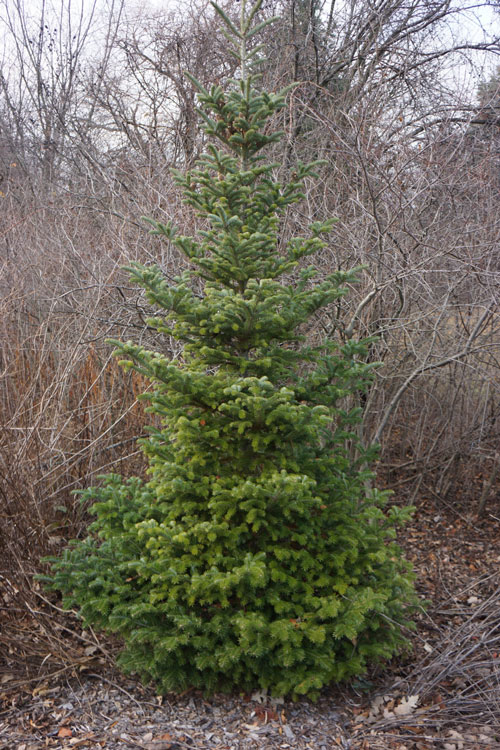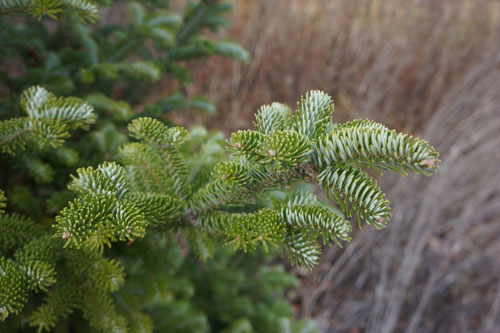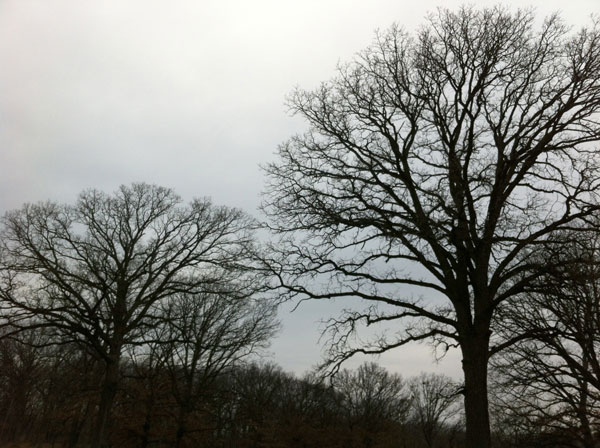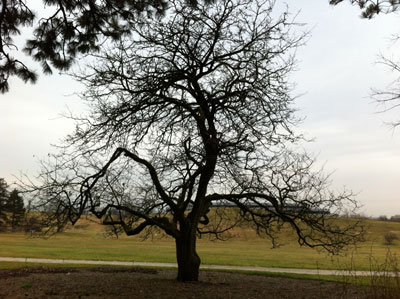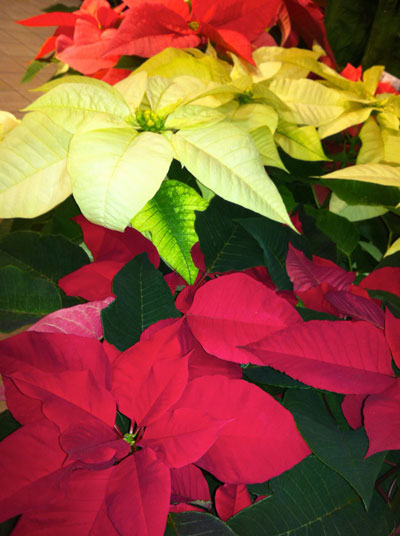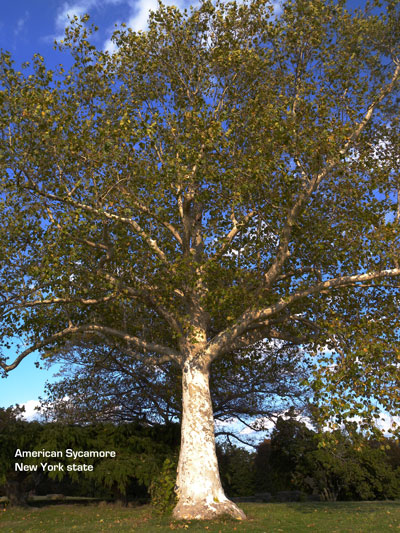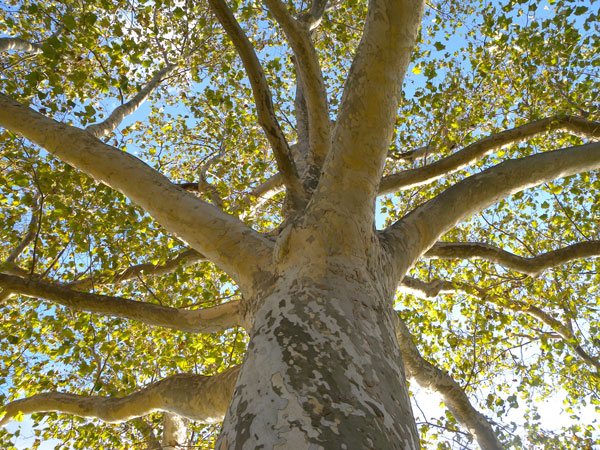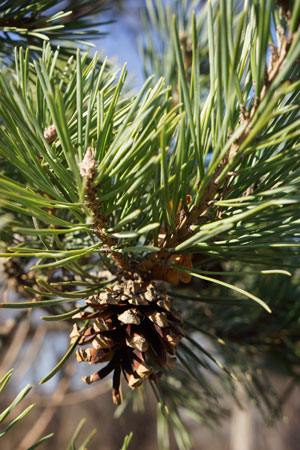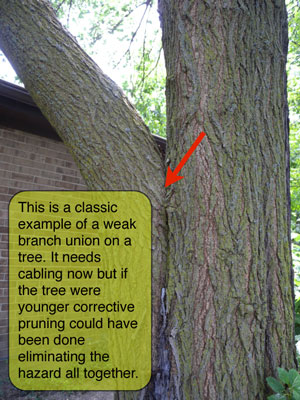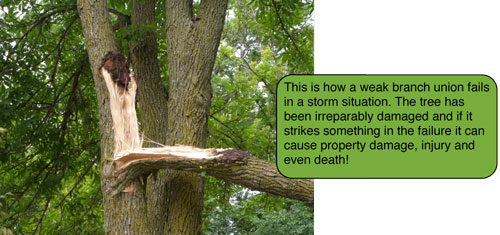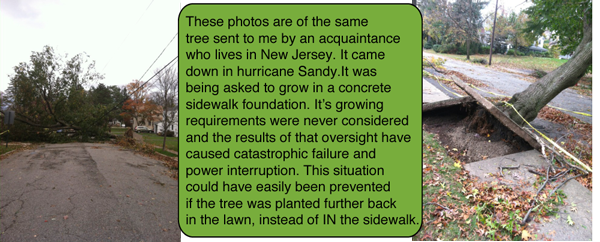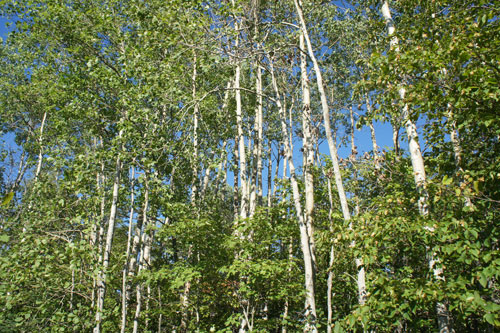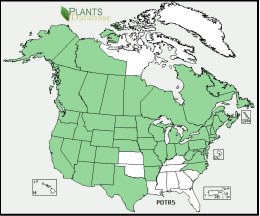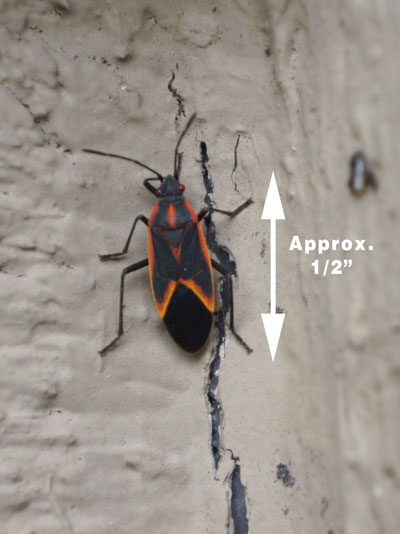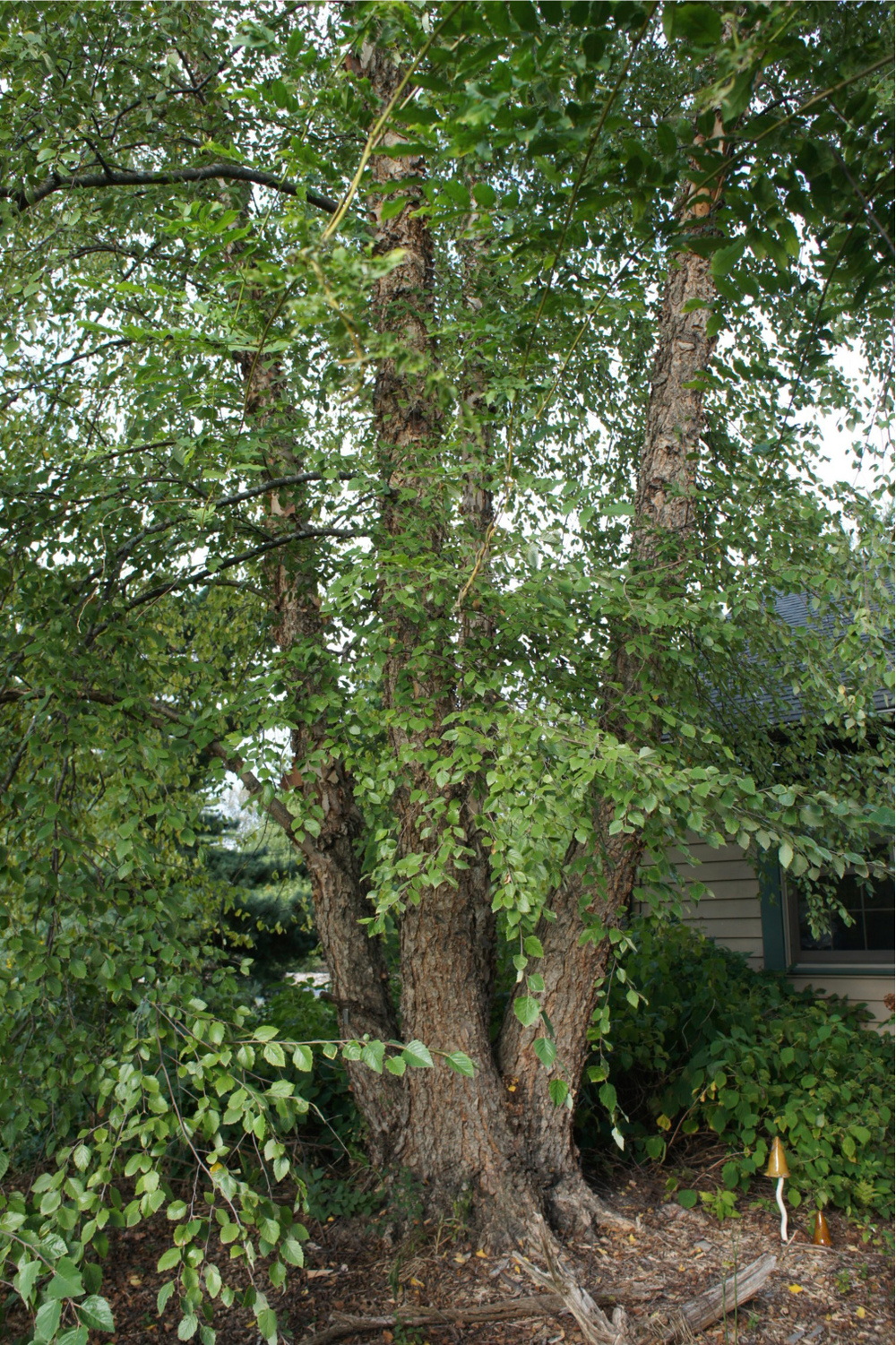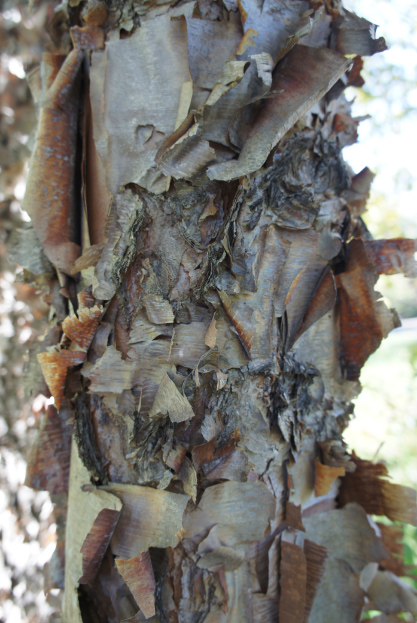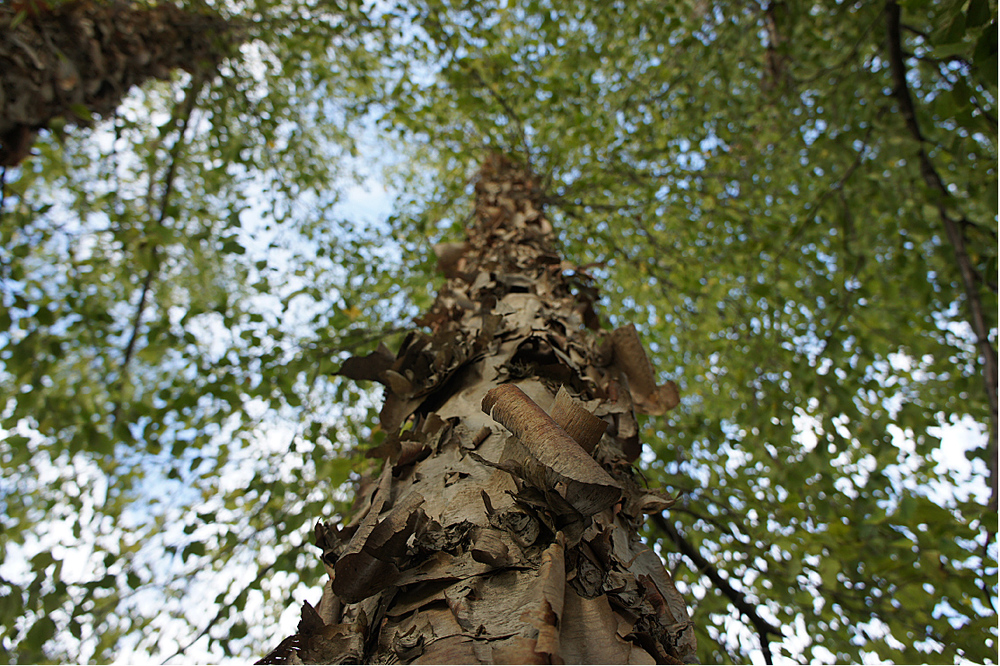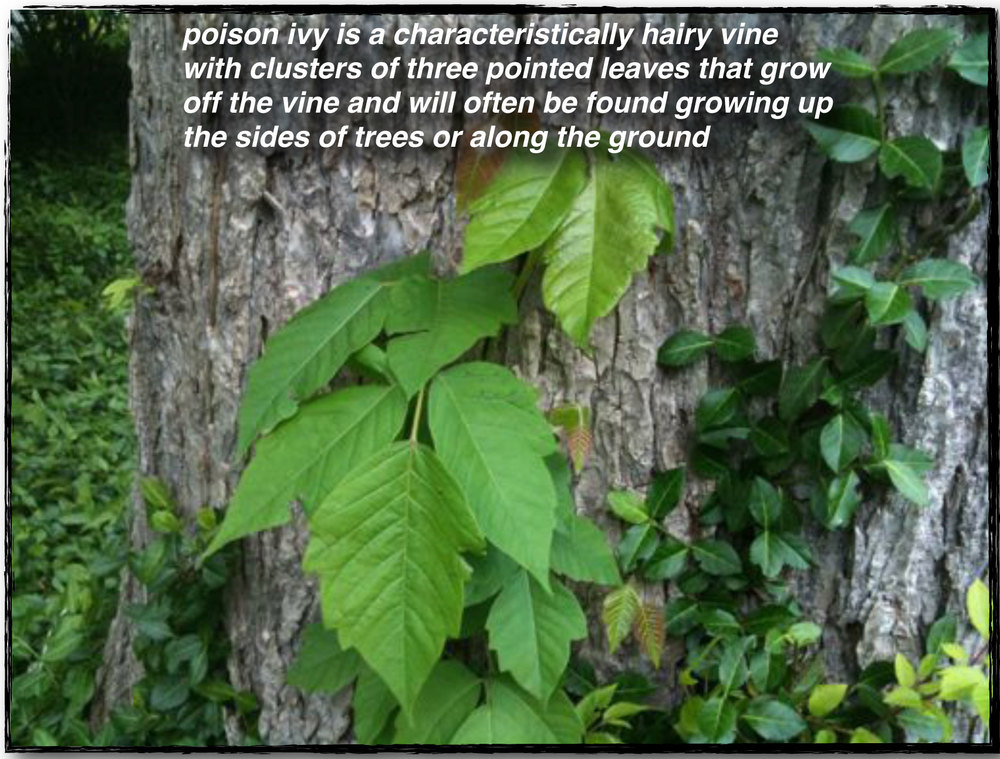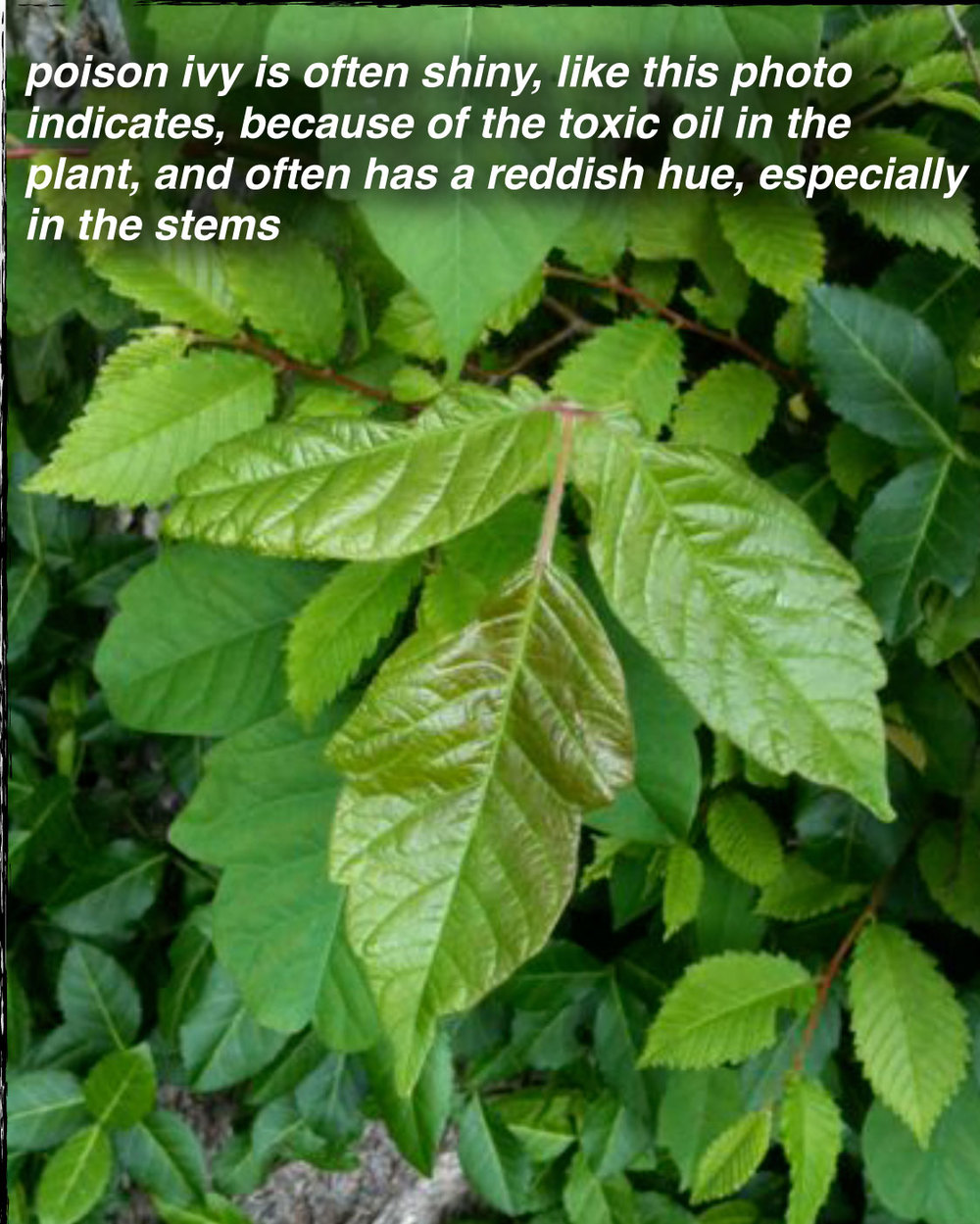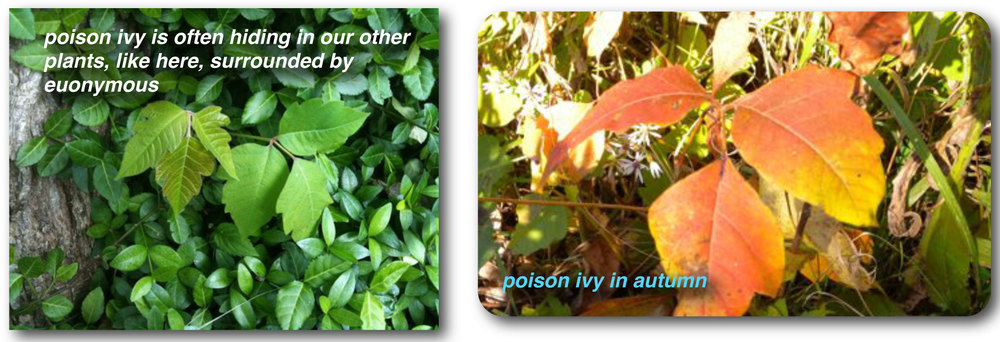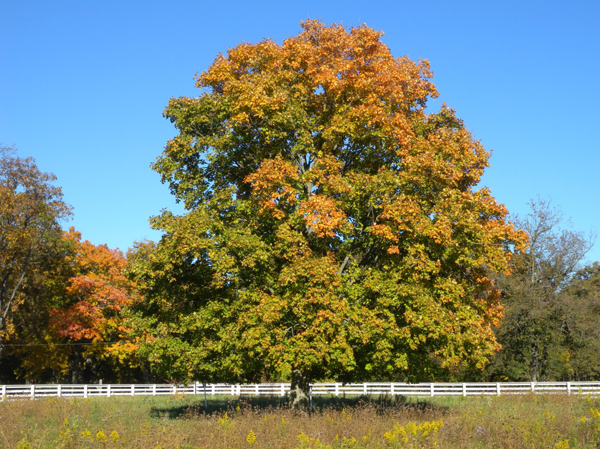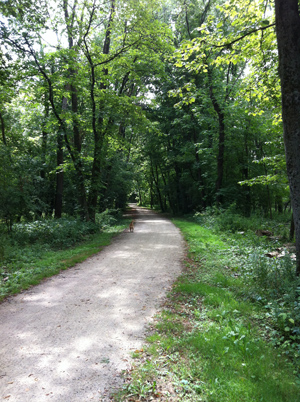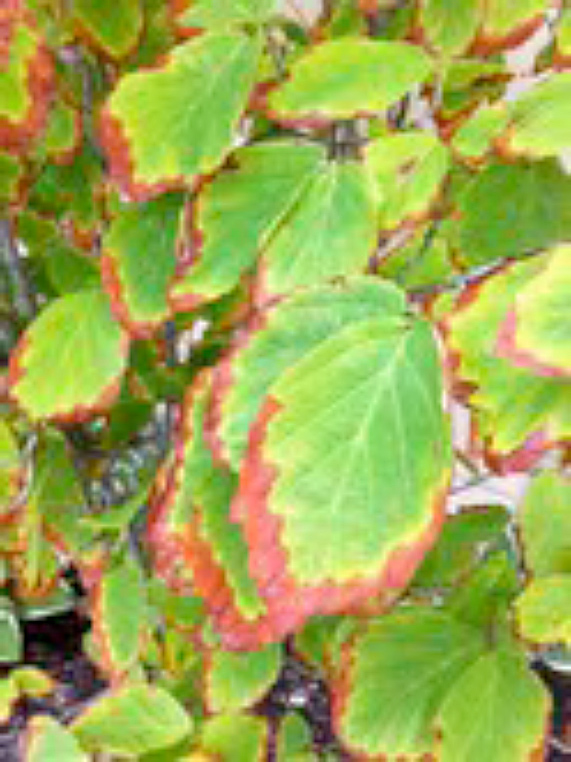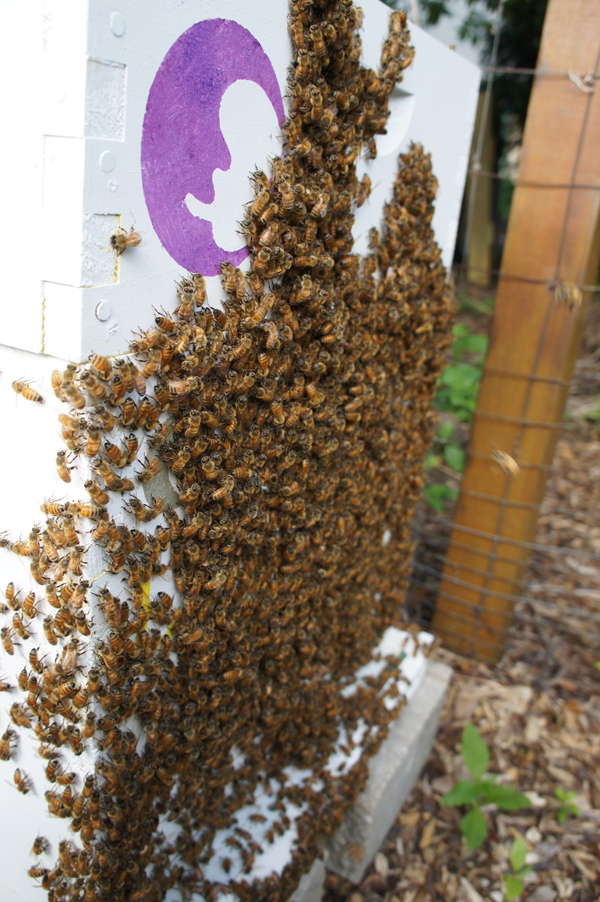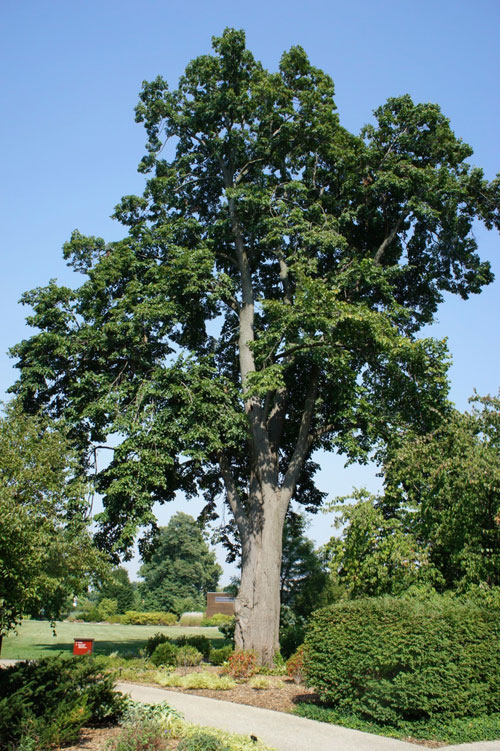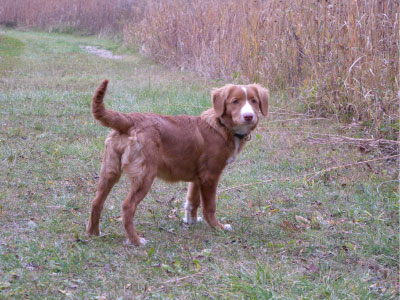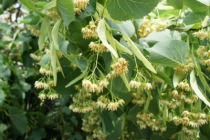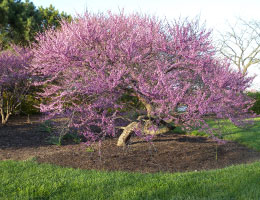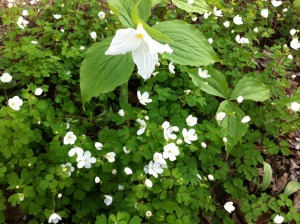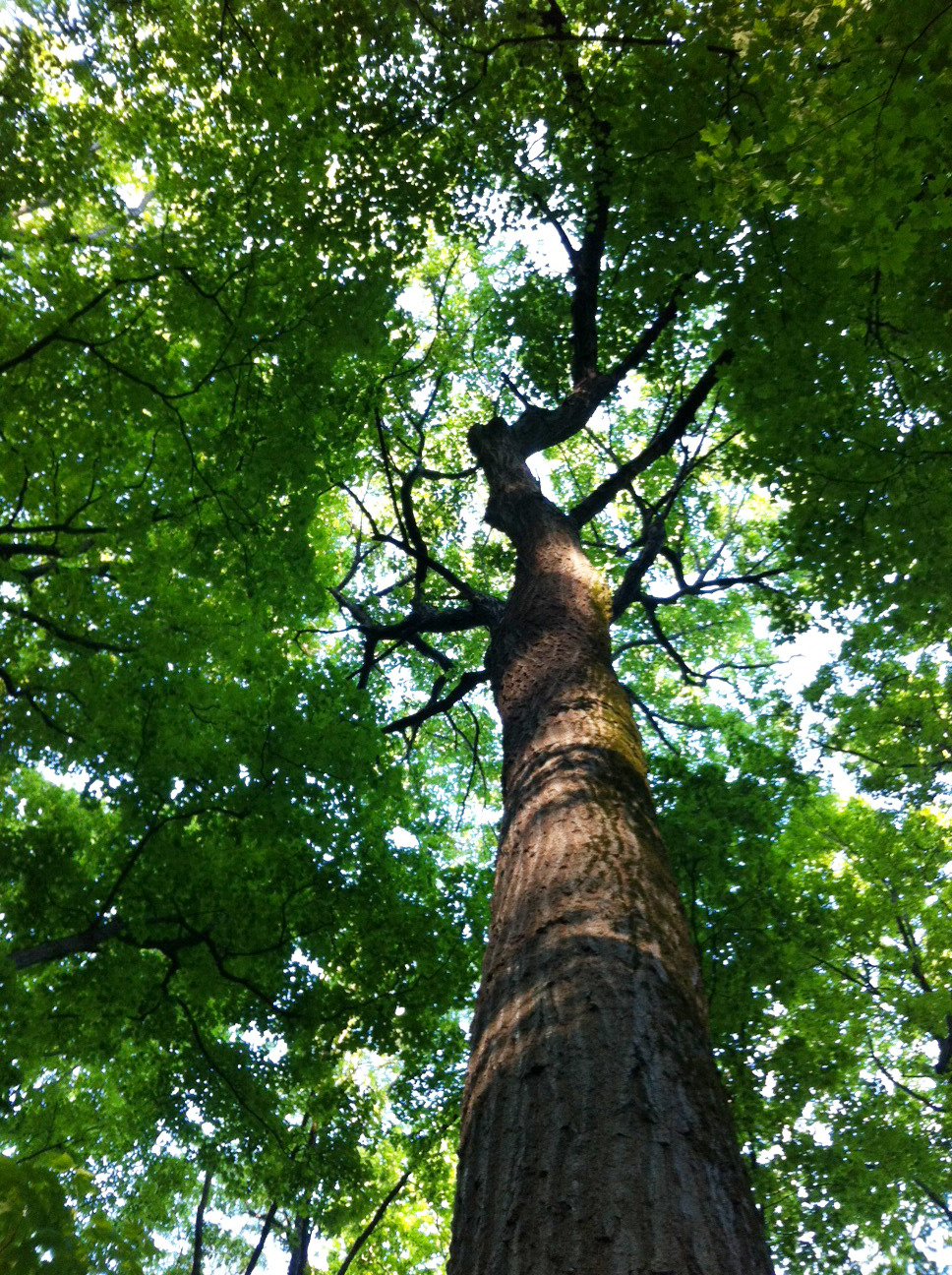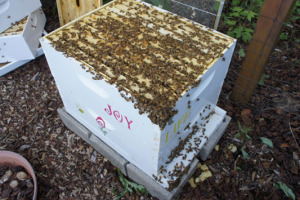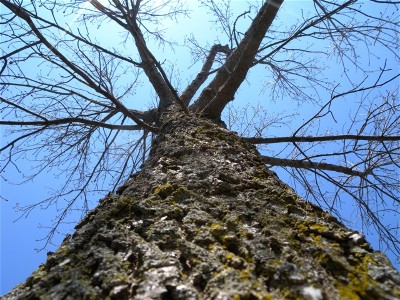January 2013 Wisdom from the Trees
/Tree of the Month • Arborvitae
White Cedar - Thuja occidentalis
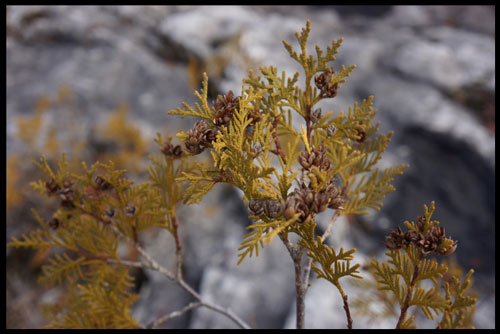 Arborvitae seedling growing in the rocks along the lake front. Credit: Lesley Bruce Smith
Arborvitae seedling growing in the rocks along the lake front. Credit: Lesley Bruce Smith
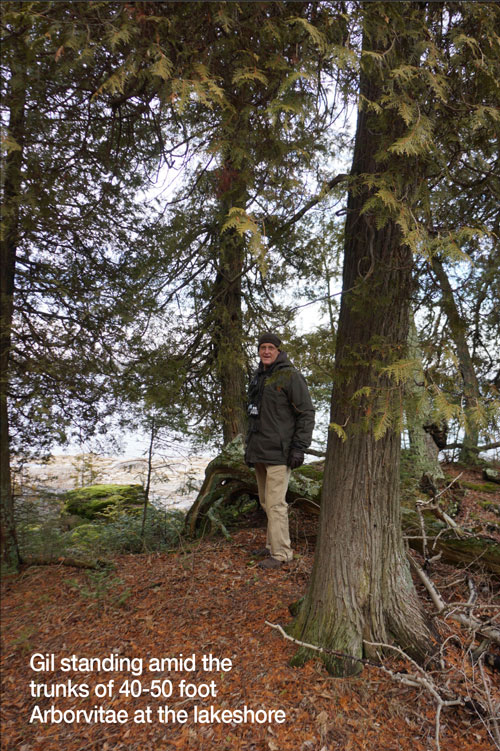 by Lesley Bruce Smith
by Lesley Bruce Smith
Arborvitae is on our mind because we just spent a week in one of our favorite spots on the globe, the northern tip of Door County, where our tree of the month calls home. Unlike the Chicago area, where we have millions of Arborvitae planted in our landscapes, the White Cedars we see in northern Wisconsin are doing things we will never see them do here. They grow to heights of 60’ or more, self propagate in the rocks along the lake shore, and can grow out of the cracks in glacial rocks. All of this to tell us that Door County is their home and the place they love living. The summers are cooler and shorter, the water is abundant and clear, the soil is gravelly and extremely well drained. Chicago summers are hot, sometimes long and recently very dry and the soils are heavy and clay like. 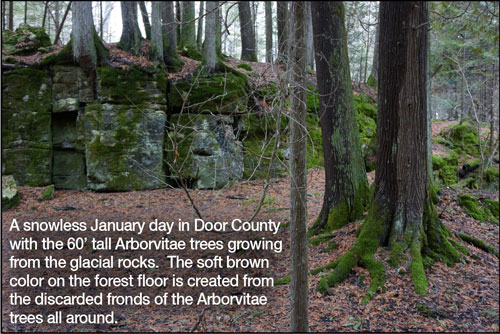 by Lesley Bruce SmithSo, although we can get arborvitae to grow contentedly for many years in the Chicago area they will never call this place home. They will never look like the giants we see up north and in order for them to survive we need to remember they are out of their native habitat and need some extra TLC to manage life on the margins of their home environment.
by Lesley Bruce SmithSo, although we can get arborvitae to grow contentedly for many years in the Chicago area they will never call this place home. They will never look like the giants we see up north and in order for them to survive we need to remember they are out of their native habitat and need some extra TLC to manage life on the margins of their home environment.
They need to be planted up high in the soil and mulched to mimic their northern home forest floor, the further out the mulch the better for the tree. (see our planting abstract for details on this) As a matter of fact we seldom even think of Arborvitae as trees here, we think of them as shrubs. That is what plants do when they leave their homes. They are not as well nurtured, they are not as comforted or protected, they are living life on the edge and so their growth is stunted. But as we live with them and fill in where mother nature cannot we can enjoy their company throughout the course of our lives and beyond.
They have been used by the native peoples (and by Gil) for boat building due to their rot resistant characteristics. The Indian people referred to this tree as Oo-soo-ha-tah, meaning featherleaf. Aromatic oils were distilled from its leaves and twigs to relieve chest colds.
Something You Will Not See in Chicago
Backyard Wisdom by Gilbert A Smith
ISA Certified Master Arborist
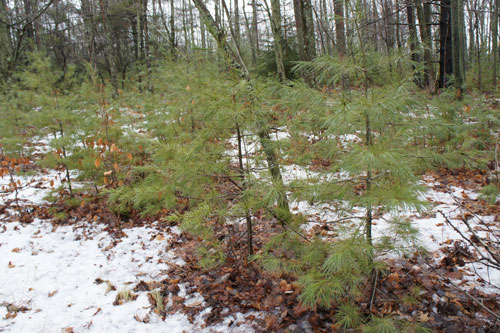 You will never see young, sprouting Pines, Spruce, and Fir trees like this anywhere in NE Illinois. In fact when European settlers first arrived here there were no native evergreens in the Chicago area.
You will never see young, sprouting Pines, Spruce, and Fir trees like this anywhere in NE Illinois. In fact when European settlers first arrived here there were no native evergreens in the Chicago area.
I took this picture In Door County, WI because this is what the forest looks like in most of the the Eastern United states and Europe but not in the prairie states.
So why don’t evergreens grow naturally here? The reason lies completely in our heavy, clay, alkaline soils. From the moment any evergreen is planted here it is under stress because its roots can not proliferate in our soils.
Should we avoid planting evergreens then? Many strict native enthusiasts advocate this. But we love the beautiful grey green foliage of the Colorado Blue Spruce, the soft scented needles of the Eastern White Pine, the graceful swoop of Norway Spruce, and the tawny odor as we brush an Arborvitae hedge. And what would we do without English Yews that frame so many of our homes?
Here are the things that we can do to help our beautiful evergreens thrive.
- Plant them high above our heavy clay soils. (see our planting abstract) Note: this is not a commonly accepted practice since most planting instructions come to us from eastern and European horticulturists.
- Keep a good layer of mulch on all evergreens, trees and shrubs out to the branch spread. Note: Take a look at the picture from Door County. You’ll see a heavy leaf mulch and no grass competing with the roots.
- Give them enough light. Most evergreens can not compete with shade created by other trees. That is why you find many evergreens growing in the mountains where shade trees can’t survive.
- There are several insect and fungal diseases that evergreens under stress cannot fight. As a last resort, we have to spray for Diplodia, Dolthestroma, Rhizospharea, Ipse beetle, and Needle Scale. We want you to know that we use the very least toxic or non toxic sprays only when they are necessary.
Now you know why it takes a little bit more care to grow evergreens in the Chicago area, and we think they’re worth it.
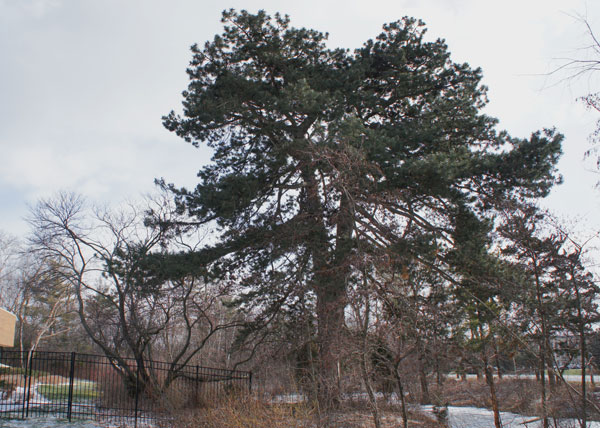 by Lesley Bruce SmithThis is one of the largest Austrian Pines in Lake County. It has a 40” trunk diameter and is 90 feet tall. It was planted by the farmer that once owned the land now inhabited by an industrial complex. It is planted in a raised island with no other competition for shade and the island provides good drainage. And please note: there is no turf grass growing beneath it so it can utilize the nutrients from it’s own needle mulch.
by Lesley Bruce SmithThis is one of the largest Austrian Pines in Lake County. It has a 40” trunk diameter and is 90 feet tall. It was planted by the farmer that once owned the land now inhabited by an industrial complex. It is planted in a raised island with no other competition for shade and the island provides good drainage. And please note: there is no turf grass growing beneath it so it can utilize the nutrients from it’s own needle mulch.
Brave Buds
Mother Nature's Moment by Lesley Bruce Smith
ISA Certified Arborist
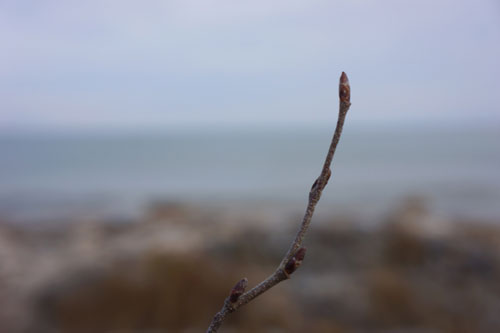 Birch Tree Bud by Lesley Bruce SmithTrees are such amazing organisms. The buds you see in the photo above are of a young Birch tree growing on the shores of Lake Michigan in Northern Door County. They were formed when the tree was in full throttle last summer. During the summer, trees and deciduous shrubs produce lots of sugars through heavy photosynthetic activity of their leaves. The buds that brave the winter chills hold all the DNA and energy needed to push out the flush of spring’s flowers and leaves. Now this Birch is biding its time until spring, using the sugars/alcohol in it’s vascular system as a type of anti-freeze to keep it protected in the frigid temperatures of winter. Trees can withstand frostbite temperatures and brittle wind chills as long as the temps stay steady. They have problems and incur winter damage and die back when we get unexpected warm sunny days, which tends to get their juices flowing, followed by more bone chilling cold air at night or during some of the wild temperature swings we have had. When the trees are healthy even the winter kill can be overcome, but when they are in a weakened condition winter kill can be one more insult that causes significant dieback.
Birch Tree Bud by Lesley Bruce SmithTrees are such amazing organisms. The buds you see in the photo above are of a young Birch tree growing on the shores of Lake Michigan in Northern Door County. They were formed when the tree was in full throttle last summer. During the summer, trees and deciduous shrubs produce lots of sugars through heavy photosynthetic activity of their leaves. The buds that brave the winter chills hold all the DNA and energy needed to push out the flush of spring’s flowers and leaves. Now this Birch is biding its time until spring, using the sugars/alcohol in it’s vascular system as a type of anti-freeze to keep it protected in the frigid temperatures of winter. Trees can withstand frostbite temperatures and brittle wind chills as long as the temps stay steady. They have problems and incur winter damage and die back when we get unexpected warm sunny days, which tends to get their juices flowing, followed by more bone chilling cold air at night or during some of the wild temperature swings we have had. When the trees are healthy even the winter kill can be overcome, but when they are in a weakened condition winter kill can be one more insult that causes significant dieback.
The important thing to remember is not to let any unknowing landscapers sheer off all your flower/leaf buds in the fall of the year. You would be surprised how often this happens, ruining the beautiful show of spring. When trimming needs to be done, make sure you have someone do it who knows about horticulture and the art and science of trimming. That way you will enjoy your flowering trees and shrubs for many years to come.


